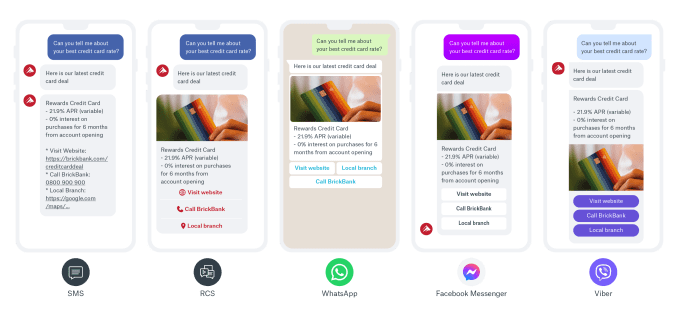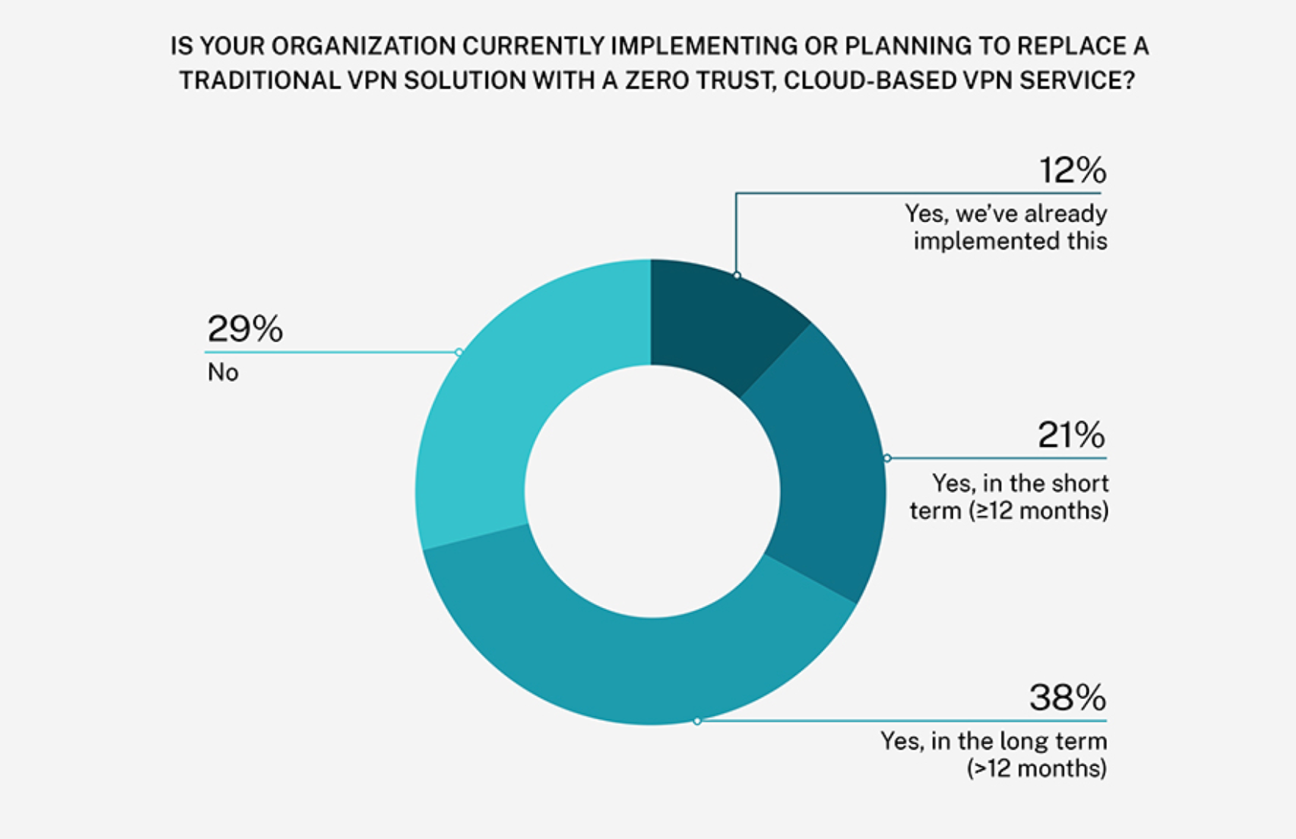8 core
64gb ram
1.5tb ssd/nvme disk.
i need 62... | Read the rest of https://ift.tt/34Jmde9
from Web Hosting Talk - Dedicated Server https://ift.tt/34Jmde9
via https://ifttt.com/ IFTTT
We’re excited to announce Day in the Life of a UX Designer, a new video instruction from Hope Armstrong! This 25-minute session for our UX Design Techdegree goes into detail with two UX Designers, Micah Carroll and Alex Guevara, about what...
The post New course for Techdegree: Day in the Life of a UX Designer appeared first on Treehouse Blog.
The cloud infrastructure market kept growing at a brisk pace last quarter, as the pandemic continued to push more companies to the cloud with offices shut down in much of the world. This week the big three — Amazon, Microsoft and Google — all reported their numbers and as expected the news was good with Synergy Research reporting revenue growth of 33% year over year, up to almost $33 billion for the quarter.
Still, John Dinsdale, chief analyst at Synergy was a bit taken aback that the market continued to grow as much as it did. “While we were fully expecting continued strong growth in the market, the scale of the growth in Q3 was a little surprising,” he said in a statement.
He added, “Total revenues were up by $2.5 billion from the previous quarter causing the year-on-year growth rate to nudge upwards, which is unusual for such a large market. It is quite clear that COVID-19 has provided an added boost to a market that was already developing rapidly.”
Per usual Amazon led the way with $11.6 billion in revenue, up from $10.8 billion last quarter. That’s up 29% year over year. Amazon continues to exhibit slowing growth in the cloud market, but because of its market share lead of 33%, a rate that has held fairly steady for some time, the growth is less important than the eye-popping revenue it continues to generate, almost double its closest rival Microsoft.
Speaking of Microsoft, Azure revenue was up 48% year over year, also slowing some, but good enough for a strong second place with 18% market share. Using Synergy’s total quarterly number of $33 billion, Microsoft came in at $5.9 billion in revenue for the quarter, up from $5.2 billion last quarter.
Finally Google announced cloud revenue of $3.4 billion, but that number includes all of its cloud revenue including G Suite and other software. Synergy reported that this was good for 9% or $2.98 billion, up from $2.7 billion last quarter, good for third place.
Alibaba and IBM were tied for fourth with 5% or around $1.65 billion each.
It’s worth noting that Canalys had similar numbers to Synergy with growth of 33% to $36.5 billion. They had the same market order with slightly different numbers with Amazon at 32%, Microsoft at 19% and Google at 7% and Alibaba in 4th place at 6%.
Canalys sees continued growth ahead, especially as hybrid cloud begins to merge with newer technologies like 5G and edge computing. “All three [providers] are collaborating with mobile operators to deploy their cloud stacks at the edge in the operators’ data centers. These are part of holistic initiatives to profit from 5G services among business customers, as well as transform the mobile operators’ IT infrastructure,” Canalysis analyst Blake Murray said in a statement.
While the pure growth continues to move steadily downward over time, this is expected in a market that’s maturing like cloud infrastructure, but as companies continue to shift workloads more rapidly to the cloud during the pandemic, and find new use cases like 5G and edge computing, the market could continue to generate substantial revenue well into the future.
As I had mentioned previously this year, I’m going back to school. Not to take classes, but to teach a course at my alma mater, Fanshawe College. I did this about a decade ago and thought it was interesting, so I was excited to give it another go. Additionally, after a friend mentioned that their […]… Read More
The post Lessons from Teaching Cybersecurity: Week 5 appeared first on The State of Security.
As communicating with customers across the world grows ever more challenging due to multiple channels, tools and networking providers, companies are looking for a way to simplify it all. Sinch, a company that makes communications APIs, announced a new tool this morning called the Conversation API designed to make it easier to interact with customers across the planet using multiple messaging products.
Sinch chief product officer Vikram Khandpur says that business is being conducted in different messaging channels such as SMS, WhatsApp or Viber depending on location, and businesses have to be able to communicate with their customers wherever they happen to be from a technology and geographic standpoint. What’s more, this need has become even more pronounced during a pandemic when online communication has become paramount.
Khandpur says that up until now, Sinch has concentrated on optimizing the SMS experience for actions like customer acquisition, customer engagement, delivery notifications and customer support. Now the company wants to take that next step into richer omni-channel messaging.
The idea is to provide a set of tools to help marketing teams communicate across these multiple channels by walking them through the processes required by each player. “By writing to our API, what we can provide is that we can get our customers on all these platforms if they are not already on these platforms,” he said.
He uses WhatsApp as an example because it has a very defined process for brands to work with it. “On WhatsApp, there is this concept of creating these pre-approved templates, and they need to be reviewed, curated and finally approved by the WhatsApp team. We help them with that process, and then do the same with other channels and platforms, so we take that complexity away from the brand,” Khandpur explained.
He adds, “By giving us that message once, we take care of all of [the different tools] behind the scenes transcoding when needed. So if you give us a very rich message with images and videos, WhatsApp may want to render it in a certain way, but then Viber renders that in a different way, and we take care of that.

Examples of transcoding across messaging channels. Image Credits: Sinch
Marketers can use the Conversation API to define parameters like using WhatsApp first in India, but if the targeted customer doesn’t open WhatsApp, then fall back to SMS.
The company has made four acquisitions in the last year including ACL Mobile in India and SAP’s Interconnect Messaging business to enhance its presence across the world.
Sinch, which competes with Twilio in the communications API space, may be one of the most successful companies you never heard of, generating over $500 million in revenue last year while processing over 110 billion messages.
The company launched in Sweden in 2008 and has never taken a dime of venture capital, yet has been profitable since early days. In fact, it’s publicly traded on the NASDAQ Exchange in Stockholm and will be reporting earnings next week.
Over the course of the last few years, Microsoft started adding the concept of ‘data types’ to Excel, that is, the ability to pull in geography and real-time stock data from the cloud, for example. Thanks to its partnership with Wolfram, Excel now features over 100 of these data types that can flow into a spreadsheet. But you won’t be limited to only these pre-built data types for long. Soon, Excel will also let you bring in your own data types.
That means you can have a ‘customer’ data type, for example, that can bring in rich customer data from a third-party service into Excel. The conduit fort his is either Power BI, which now allows Excel to pull in any data you previously published there, or Microsoft’s Power Query feature in Excel that lets you connect to a wide variety of data sources, including common databases like SQL Server, MySQL and PostreSQL, as well as third-party services like Teradata and Facebook.
“Up to this point, the Excel grid has been flat… it’s two dimensional,” Microsoft’ head of product for Excel, Brian Jones, writes in today’s announcement. “You can lay out numbers, text, and formulas across the flexible grid, and people have built amazing things with those capabilities. Not all data is flat though and forcing data into that 2D structure has its limits. With Data Types we’ve added a 3rd dimension to what you can build with Excel. Any cell can now contain a rich set of structured data… in just a single cell.”
The promise here is that this will make Excel more flexible and I’m sure a lot of enterprises will adapt these capabilities. These companies aren’t likely to move to Airtable or similar Excel-like tools anytime soon but have data analysis needs that are only increasing now that every company gathers more data than it knows what to do with. This is also a feature that none of Excel’s competitors currently offer, including Google Sheets.
With 100 million users in over 100 countries, Citrix has earned a leadership position in digital workspace solutions.
In the evolution of applications, we have enabled IT teams to become more agile by delivering a Citrix Workspace from the …
The post A unified approach to SASE that starts with the digital workspace first appeared on Citrix Blogs.
Security researchers learned that the Maze digital crime gang is in the process of shutting down its ransomware operations. Bleeping Computer began hearing rumors of the shutdown in early September 2020. In an email conversation, a ransomware attacker told the computer self-help site that the Maze gang had stopped encrypting new victims in September 2020 […]… Read More
The post Maze Ransomware Gang to Shut Down Operations appeared first on The State of Security.
Discover data points from a recent Pulse and Citrix survey on zero trust security. They may surprise you.
Talk to 100 security executives about how they intend to deliver a great employee experience and you may get some surprises. What …
The post Zero trust security enhances employee experience first appeared on Citrix Blogs.
Citrix has long been a trusted partner for secure, consistent delivery of the applications your employees need to be productive. But we know there’s no single approach to safeguarding both your workforce, and your apps. Start your Citrix Security Summit …
The post Secure your workspace, protect your workforce first appeared on Citrix Blogs.
With employees working from anywhere and everywhere in 2020, the COVID-19 pandemic has made security even more front of mind for IT leaders. It should be. After all, the attack surface has expanded because of an increasingly diverse number of …
The post Citrix enables smart, flexible security for customers first appeared on Citrix Blogs.
This blog post was co-authored by Mathew Varghese, Director of Product Analytics at Citrix.
Companies everywhere responded to the COVID-19 pandemic boldly, as they rapidly and successfully enabled entire organizations to work remotely, almost overnight. But shortcuts and tactical responses …
The post Protect your organization’s most valuable assets with Citrix first appeared on Citrix Blogs.
Recently, I’ve written about the corollary between the video games children are playing and our work with joint alliances around Cloud and Workspace . Today I’ll share my own throwback obsession (let’s just say there are lots of roller coasters) …
The post Avoiding the ups and downs of workspace security first appeared on Citrix Blogs.
A new Pulse and Citrix survey revealed that 71 percent of security executives are looking at replacing their traditional VPN technology with a zero trust offering.

Citrix has long been a leader in providing secure remote access to employees working …
The post Announcing Citrix Secure Workspace Access for zero trust access first appeared on Citrix Blogs.